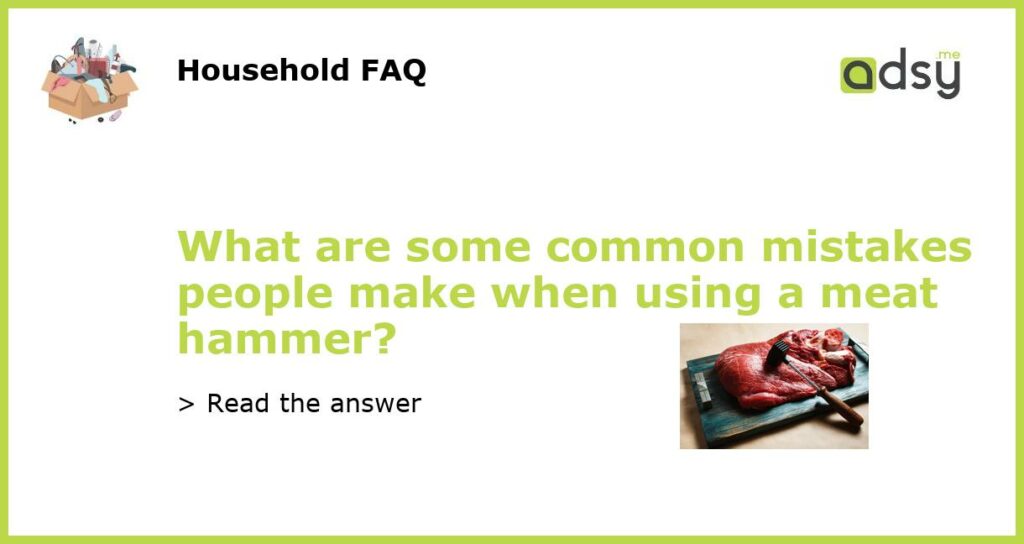Using a Meat Hammer: Common Mistakes to Avoid
If you’re a fan of tenderizing your meat before cooking it, you probably own a meat hammer. These handy kitchen tools are great for breaking down tough meat fibers and pounding your cutlets into perfect shape. However, using a meat hammer isn’t as simple as it seems. Here are some common mistakes you should avoid:
Not choosing the right hammer for the job
Meat hammers come in various shapes and sizes. Some have flat heads, while others have spikes or points. If you’re not using the right hammer for the job, you could end up with a destroyed piece of meat. For example, a flat hammer is best for tenderizing chicken breasts, while a pointy one is great for tougher cuts of beef. Take some time to find a hammer that suits your needs and the type of meat you’ll be working with.
Hammering too hard
Tenderizing your meat doesn’t mean pummeling it into submission. If you hammer too hard, you’ll end up with a flat, unappetizing cutlet that’s tough to chew. You only need to apply enough pressure to break down the meat fibers. This will make the meat more tender without flattening it.
Not covering the meat before hammering
When you’re pounding your meat with a hammer, you’re creating a lot of force. This can cause the meat to tear or break apart, especially if it’s thin. To prevent this from happening, place a piece of plastic wrap or parchment paper over the meat before you start hammering. This will protect the meat and ensure it stays intact.
Using the wrong side of the hammer
Some meat hammers have a textured side and a smooth side. The textured side is meant for tenderizing, while the smooth side is best for flattening and thinning. Using the wrong side of the hammer can damage the meat and make it tougher. Make sure you use the correct side of the hammer for the job at hand.
Hammering dry meat
If you’re working with a dry piece of meat, no amount of pounding will make it more tender. Before you start hammering, marinate your meat or use a dry rub to add moisture and flavor. This will not only make your meat more tender but it will also enhance the taste.






